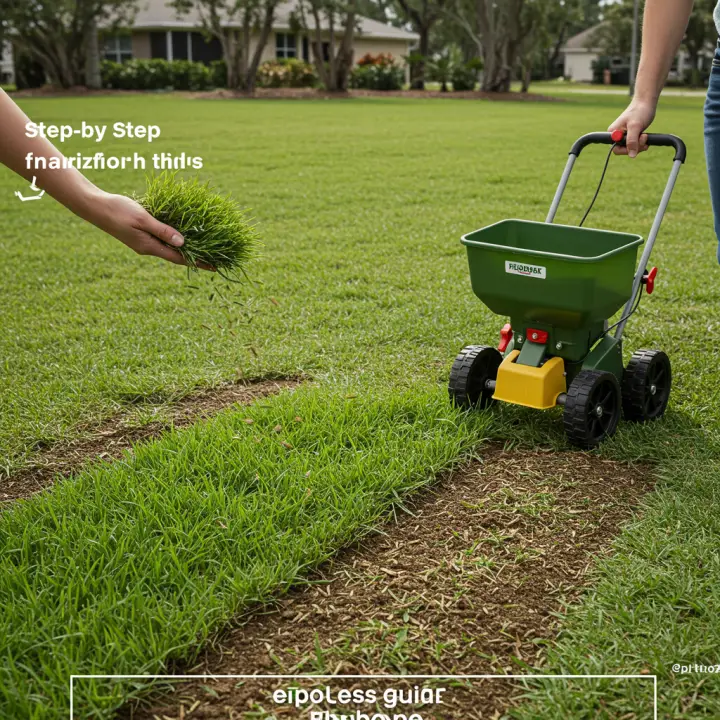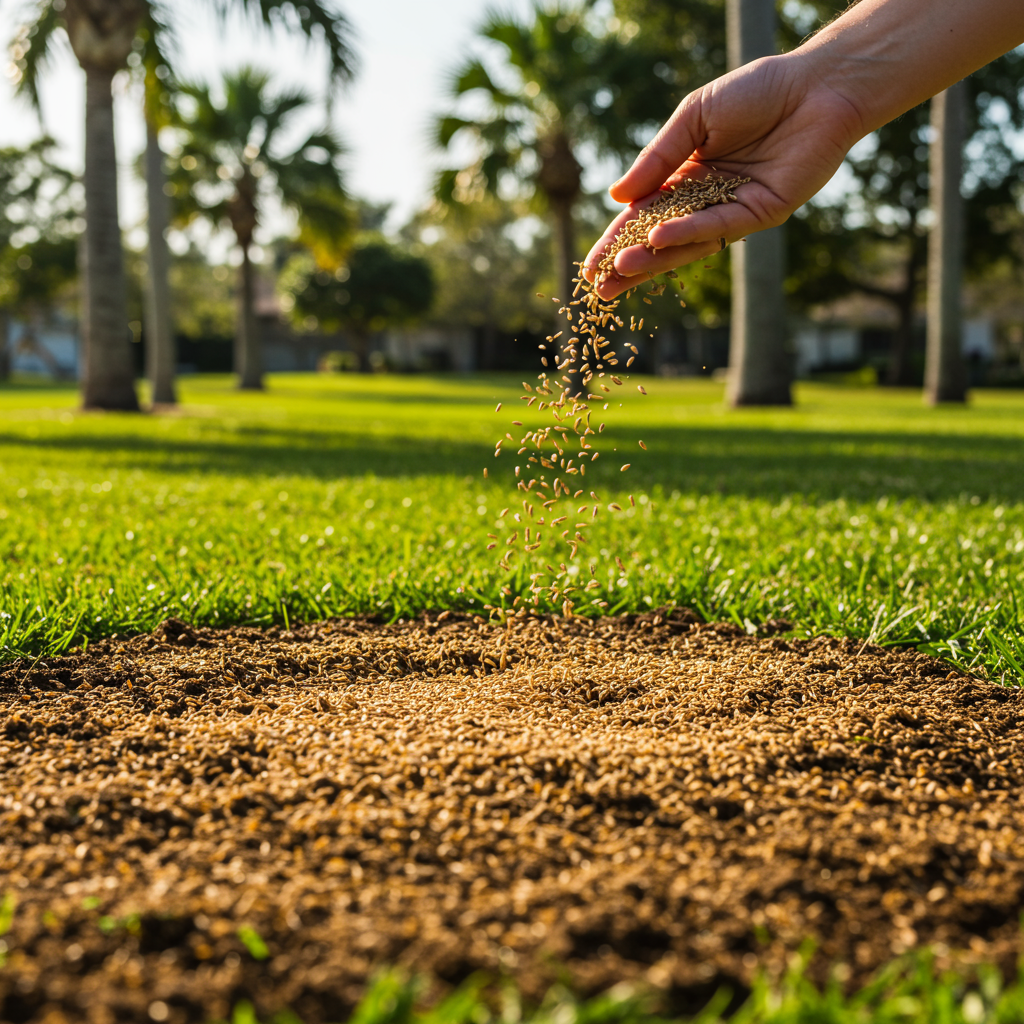Planting grass seed successfully in Florida requires a tailored approach due to the state’s unique climate and soil conditions. This comprehensive guide provides a step-by-step process for achieving a lush, vibrant lawn, even in the challenging Florida environment.
This guide outlines the best practices for planting grass seed in Florida, covering everything from selecting the right grass type to essential maintenance tips. It considers Florida’s specific climate challenges and offers practical advice for achieving a thriving lawn.

Introduction to Planting Grass Seed in Florida
Florida’s subtropical climate presents unique challenges for growing grass. High humidity, intense sunlight, and varying soil compositions demand a strategic approach. Choosing the right grass seed variety and understanding the optimal planting time are crucial for success. This guide will walk you through each step, offering expert advice and tips for a beautiful, healthy lawn.
Choosing the Right Grass Seed for Florida
Selecting the correct grass species is the cornerstone of a successful lawn. Consider the following factors:
Warm-Season vs. Cool-Season Grasses
Florida’s climate favors warm-season grasses, which thrive in hot temperatures and go dormant during cooler months.
Bahia: A hardy, drought-tolerant choice.
Bermuda: Popular for its dense growth and resilience.
Centipede: Low-maintenance and shade-tolerant.
St. Augustine: A common choice, offering good shade and wear tolerance.
Zoysia: Heat and drought-tolerant, creating a thick, luxurious lawn.
Matching Grass Type to Your Needs
Consider your lifestyle and the specific conditions of your yard:
High-traffic areas: Opt for durable grasses like Bermuda or Zoysia.
Shady areas: Choose St. Augustine or Centipede.
Low-maintenance options: Consider Bahia or Centipede.
Preparing Your Soil for Planting
Proper soil preparation is crucial for robust grass growth.
Testing Your Soil
A soil test can identify deficiencies and inform your fertilization strategy. Your local agricultural extension office can provide soil testing services.
Clearing the Area
Remove existing vegetation, rocks, and debris. Till the soil to a depth of 6-8 inches to loosen it and improve drainage.
Amending the Soil
Based on your soil test results, amend the soil with organic matter like compost or peat moss to improve its structure, drainage, and nutrient content.
Planting Your Grass Seed
Follow these steps for successful seed planting:
Timing is Key
Seeding Techniques
Broadcast Spreading: Evenly distribute seeds across the prepared area.
Drilling: Use a seed drill for more precise seed placement.
Hydroseeding: A specialized technique that sprays a mixture of seeds, mulch, fertilizer, and water.
Seed Depth and Coverage
Plant seeds at the recommended depth (usually 1/4 inch) and ensure adequate coverage. Lightly rake the area after seeding to cover the seeds with a thin layer of soil.
Watering and Fertilizing
Proper watering and fertilization are essential for establishing a healthy lawn.
Watering Schedule
Water frequently and lightly during the first few weeks to keep the soil consistently moist but not waterlogged. Gradually reduce watering frequency as the grass matures.
Fertilization
Apply a starter fertilizer specifically formulated for new lawns. Follow the instructions on the fertilizer package carefully.
Ongoing Lawn Maintenance
Maintain your lawn with regular mowing, weeding, and pest control.
Mowing Techniques
Mow at the correct height for your grass type and avoid scalping the lawn.
Weed Control
Implement a weed management strategy to prevent weeds from competing with your new grass.
Pest and Disease Management
Monitor your lawn for signs of pests or diseases and take appropriate action if necessary.
FAQs: Planting Grass Seed in Florida
What is the best grass seed for Florida’s hot climate? St. Augustine, Bermuda, Zoysia, Centipede, and Bahia are all good choices.
When should I plant grass seed in Florida? Late spring or early summer is generally the best time.
How often should I water newly planted grass seed? Water frequently and lightly to keep the soil consistently moist, but not waterlogged.
What kind of fertilizer should I use? Use a starter fertilizer formulated for new lawns.
How long does it take for grass seed to germinate in Florida? Germination time varies depending on the grass type and environmental conditions but typically takes 7-21 days.
How do I deal with weeds in my new lawn? Implement a weed management strategy, including pre-emergent and post-emergent herbicides.
What are the common lawn pests in Florida? Chinch bugs, grubs, and mole crickets are common lawn pests.
* Can I plant grass seed during the rainy season? Avoid planting during periods of heavy or frequent rainfall.
Conclusion
Planting a lush, healthy lawn in Florida requires careful planning and consistent effort. By following the steps outlined in this guide, including selecting the appropriate grass type, preparing the soil correctly, and maintaining proper watering and fertilization, you can achieve a beautiful, thriving lawn that enhances your landscape and provides years of enjoyment. Remember that choosing the right grass for your specific needs and conditions, understanding local climate patterns, and providing consistent care are all key factors in achieving successful planting grass seed results in Florida.

